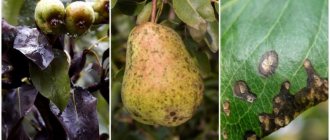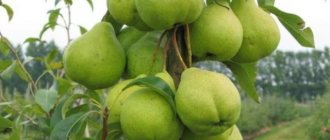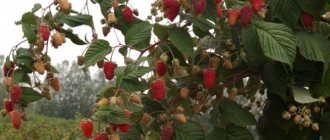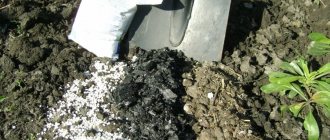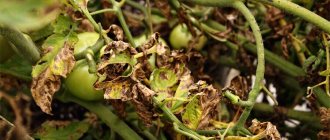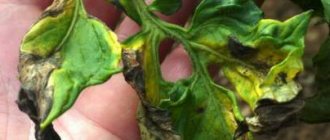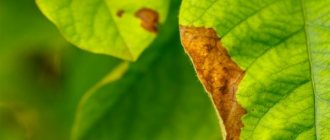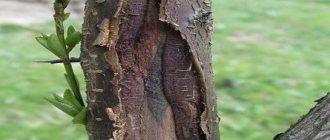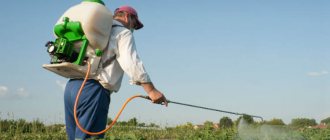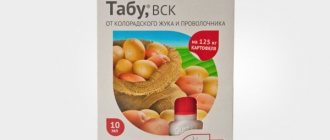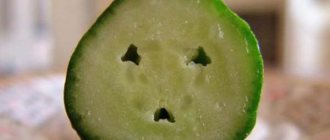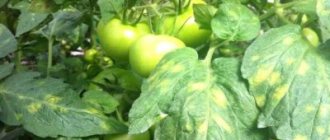Rust is the most common disease of pear leaves, which ultimately affects the entire tree. The pathology can also affect other garden crops - apple trees, quinces, and so on. By the way, rust spreads very quickly - if you miss the time to treat, you risk not only pears, but also other trees.
It is easy to notice the appearance of rust, because the disease manifests itself in the form of characteristic plaque and spots. For treatment, radical methods are used (removal and burning of all affected material), treatment with chemicals, and folk remedies. Read more about the disease, its causative agent, features of the course and danger below.
What is pear rust
Rust is recognized as one of the most common and dangerous fungal diseases that can lead to the death of a pear tree. The disease is called so because its external manifestation is very similar to metal corrosion. Orange spots with a dark center on pear leaves are where fungal spores form.
When neglected, they spread to trunks, shoots and even fruits. There is a disturbance in the mode of fruit ripening and crop growth. The causative agent of this disease is the pathogenic fungus Gymnosporangium sabinae.
Causes of disease development and provoking factors
There are 2 main types of fungus that cause rust:
- a fungus that only needs one host for its entire development cycle;
- and another representative that needs 2 different plants to fully live its life.
Rust, which causes red spots on pear leaves, refers to a fungal disease that develops on 2 different plants. The first host on which it parasitizes is some species of ornamental juniper. Having matured and overwintered on its first host, rust spores can spread hundreds of kilometers with the help of the wind and, having found a 2nd host in the form of a pear, apple tree, quince, or hawthorn, can continue their life cycle on them.
The susceptibility of pear trees to rust disease depends on many factors that need to be taken into account when growing fruit trees. Favors the appearance of brown spots on pear leaves:
- increased air humidity;
- failure to obtain the required amount of nutrients;
- closely spaced plantings of juniper;
- weakened immunity of trees;
- dense crown.
Several million spores ripen on 1 juniper bush.
Comment! Not all varieties of juniper are infectious, but only some of them: Cossack, tall, common and red.
Why do leaves turn yellow (disease)
Pear rust originates from basidiospores located on juniper or on a nearby growing pear.
This disease especially develops in wet spring weather. After rain, the basidiospores are separated and carried by the wind for tens of kilometers.
Signs of the disease
Yellow spots on pear leaves are clearly visible in July.
- Spots of unusual shape up to one and a half centimeters in diameter, garnet-colored with small black dots, appear on top of the leaf.
- The bottom of the leaf is dotted with cone-shaped depressions. If the disease has developed very strongly, the pear leaves will fall off.
Further development of the disease leads to the formation of “horns” and falling leaves.
Without foliage, this tree will gradually weaken, the fruits will become smaller and less attractive. Young shoots affected by the disease become thick and stop growing, and then dry out completely. If the disease does not strike severely, then after two to three years the affected areas of the branches and trunk will crack.
Risk group
How strongly the rust pathogen will affect a pear tree depends on the specific variety. Curet, William, Clapp's Favorite, and Winter Dikanka are very susceptible to this disease. Resistant varieties include Gulabi, Sailo, Suniani, Gordzala and Nanaziri.
Disease development cycle
The orange fungus first appears on pine needles, cones, and juniper branches. These parts look yellowed and dried out. Then the fungus moves to the trunk and shoots of the tree, forms a mycelium in the form of thickenings, swellings and overwinters under the bark. In spring, gelatinous telytospores form in these places. They look like conical growths. Further, upon maturation, basidiospores appear.
Basidios dry out after spring rain, break away from their first host and are carried by the wind over long distances. Once on a pear, they quickly parasitize it. Developing on the fruit tree, the fungus causes orange spots on the leaves and enters a stage of its development in which it must return to the juniper for further life.
Comment! The development cycle of the fungus takes about 1.5 years and requires 2 hosts. After living for a certain time on the juniper, the fungus settles on the pear. Then it moves again to the juniper and this is how the cycle of its existence occurs.
Causes of the disease
The culprit of the disease is a fungus. It attacks the plant in the summer and deprives it of half its harvest. The carrier of the disease is juniper. This is where the infection overwinters. In humid, windy, and most importantly warm weather, the opened spores break off and are transported over long distances. At this moment, the fruit crop becomes infected. After some time, changes gradually appear on the foliage.
Red spots are especially noticeable in July. They then transform into “horns” and cause the leaves to fall off. In winter, the infection moves back to the juniper.
Signs of illness
You can notice the first traces of the disease in the spring, when the leaves of the pear tree bloom. Small yellow spots appear on pear leaves. Gradually they enlarge and become orange in color with black dots and gray stripes in the middle.
If you do not take measures to treat rust, then after about a month, yellow growths in the form of papillae appear on the underside of the pear leaves. These are the sites where epidiospores form, which are subsequently transported by the wind to the juniper.
At the beginning of its settlement on a fruit tree, rust does not cause much harm to the pear. But if you do not fight it, it will spread throughout the entire plant, the leaves on the pear will become covered with rusty spots, begin to fly off prematurely, the shoots will slow down their growth, and acquire a short and thick shape. The fruits will fall off unripe.
Due to premature leaf fall, the tree will not receive enough photosynthesis products, its immunity will weaken, and it will become less resistant to scab disease and pests. Winter hardiness will also decrease, which is why the pear may not be revived after severe frosts.
Why is rust dangerous?
A diseased plant's leaves fall off early. The petioles turn dark, and spots appear on the shoots. As a result, the number of ovaries decreases, which causes low yields. The fruits begin to fall off before reaching technical maturity.
What else is dangerous?
- The culture's natural immunity becomes weak. Therefore, after being damaged by rust, the plant becomes very vulnerable to other diseases and is attacked by pests.
- Reduced immunity subsequently reduces the winter hardiness of the plant. Shoots affected by the disease will not withstand frost. As a result, frost holes and cracks of various sizes will appear on the surface. In their place, hollows are formed, which contribute to the destruction of the tree, since due to damage to the bark the crop will become unstable to bad weather conditions.
- Rust will reduce the plant's photosynthesis process. This will not allow the tree to develop properly and will lead to its weakening. If treatment is not started immediately, the plant will not be able to survive the frost.
- In a diseased pear, the fruits become small. Therefore, if there is rust, there will definitely not be a large harvest. Very often, a tree that has recovered from the disease does not bear fruit the next year.
What to do if there are yellow spots on pear leaves
When rusty spots appear on the pear leaves, all that remains is to take specific measures to combat the fungus. To do this, various methods are used depending on the severity of the disease. Spraying with copper and sulfur-containing preparations gives good results. Mechanical work with the consequences of the disease is important.
Mechanical treatment of affected trees
If rust in the form of orange spots has spread on the pear, then measures must be taken to eliminate the spores, which are the source of infection, as much as possible. For this:
- Trim and burn all diseased, dry and orange branches and stems located in the juniper area. If it is very badly affected, then cut down the tree completely and burn it.
- If possible, plant a row of dense trees to separate the pear plantings from the juniper plantings, even if they grow several kilometers away.
- Trim branches (5-10 cm below the lesion border) of pears with dark spots on the leaves, infected with rust. Collect fallen leaves. Burn it all. Treat the sections with 5% copper sulfate and cover the wounds with garden varnish.
- After destroying the affected parts of the tree, the soil around the pear must be treated with Bordeaux mixture or urea.
All tools used for pruning and processing diseased trees must be disinfected.
Fungicides for pear rust
Rust fungus spores are killed when sprayed with fungicides designed to combat this particular disease. There are many such remedies that are used to treat plants from several fungal diseases at once. For example, from scab, powdery mildew, rust. If treatment with such anti-scab drugs is carried out, then there is no need to treat the tree against orange spots.
Each product has its own calendar for its effective use, which must be followed, because measures to combat pear rust in the fall differ from those in the spring.
Advice! To prevent the disease from becoming resistant to fungicides, they must be alternated, without using the same one several times in a row.
How to fight rust on a pear with copper-containing preparations
Copper-based products have long been used in gardening to combat various fungal plant diseases, including orange spots. “Bordeaux liquid”, “Bayleton”, “Strobi”, “Raek” are widely used preparations that are harmless to beneficial insects and warm-blooded animals. They are often compatible with pesticides, but not all fungicides can be used.
The treatment of fruit trees with these preparations should be carried out using a fine spray method for more effective use of the fungicide. In this case, liquid does not drain from the leaves. She manages to influence the spores of rust fungus.
Fighting rust on pears with colloidal sulfur
Treating the affected tree with a 0.4% solution of colloidal sulfur 5 times during the entire growing season allows you to get rid of orange spots on the pear. The effectiveness of the action occurs due to the release of vapors. It is the vapors that kill fungal spores without penetrating into the plant.
Spraying with colloidal sulfur is carried out:
- after the buds swell, but before the leaves appear;
- before flowering begins;
- after flowering;
- during the formation of the ovary;
- after leaf fall.
Other drugs for pear rust
A good result is obtained by spraying the pear tree four times with chemical agents against pear rust - “Fitosporin-M”, “Poliram”, “Skor”. Each of them has its own recommendations that must be followed.
There are folk remedies to combat rust. They are effective when the disease is at the initial stage of development, or they are used as preventive measures. This is a solution of wood ash, an infusion of slurry, herbs such as horsetail, marigold, and mullein.
Gray rot is a disease of pear tree fruits.
The causative agent of the disease in pear fruit trees is the fungus Venturia pinna Aderh. Fusicladium pirinum (Sib.) Fokl. When a young pear is sick, dark green, gradually turning brown velvety spots appear on the leaves on the underside, the leaves turn yellow and fall off prematurely.
When infected with scab in the spring and early summer, the spots are large, later, with repeated re-infestations, the spots are small and hardly noticeable. The spores re-infect ovaries, young shoots, and fruits. On the affected shoots, the bark is initially covered with small bubble-like swellings, which later burst under the pressure of a mass of spores, and the bark becomes rough and peels off.
The development of the disease is favored by wet, cold spring and abundant rainfall in summer. The pathogen is characterized by a narrow specialization and strict confinement to the plant, that is, the fungus affects only the pear and does not spread to other trees. The infection persists in the affected plant debris.
Control measures. Collection and removal (possibly composting) of fallen affected leaves. Spraying trees, starting from the green cone phase and, if necessary, in the summer, taking into account the waiting period, with one of the preparations: 1% Bordeaux mixture, HOM, Abiga-Peak, speed, rayok. It’s easier to navigate by the timing: before flowering and immediately after flowering.
Fruit diseases are always unpleasant, since not only the harvest spoils, but also the aesthetic qualities of the garden. We need to fight them in a timely manner. Otherwise, you can lose the entire harvest and lose the tree completely. Moreover, other plants that are in close contact with the diseased tree may also be susceptible to the disease. We list the diseases along with photographs and descriptions of symptoms.
The cause of the disease is the fungus Venturia pirina. A pear cannot become infected from an apple tree, since they have different types of pathogen.
The fungus loves high humidity and poor wind flow of the area, as well as weak plants (cracks, depletion with abundant fruiting).
The spread of the disease occurs during the flowering period of trees. Fungal spores emerge from the bags and, under favorable conditions, spread over long distances.
Fruits affected by scab are covered with brown round spots. They can merge on the fruit and become one large necrosis. When examined, the lesions resemble warts. The skin in affected areas may crack.
If the tree is damaged early, the fruit may grow small and have cracks.
Some pear diseases first attack the fruit, and only at a late stage of development they spread to the plant itself. Timely treatment of the garden will save the future harvest and prevent infection of other trees.
A fungal disease caused by the fungus Fusicladium pirinum. Initially, the spores appear on the underside of the leaf. They look like olive-colored spots. Subsequently, the disease spreads to the fruit: dark spots with rot appear, the peel cracks, the shape becomes deformed, and taste is lost.
Prevention consists of triple treatment with Bordeaux mixture (1%). The first spraying is carried out after the leaves bloom, the second on the pink buds, the third - upon completion of flowering.
To avoid infection, the crown must be trimmed in a timely manner, reducing its thickening. Unimpeded access to oxygen in most cases saves from fungus. It is also necessary to clear the ground around the trunk and remove fallen fruits.
Fruit rot
Pear disease can be determined by the signs presented in the photo. These are brown spots located on the fruit. After some time, they pass into the stage of growths containing spores of the pathogen fungus - Monilia fructigena. They move throughout all the trees in the garden and cause the fruits to become soft and lose their taste and appearance.
As a preventative measure you should:
- Perform sanitary tree pruning in a timely manner.
- Avoid the presence of fences and other structures on the site that impede free air circulation.
- Collect and destroy infested fruit without allowing it to remain on or near the tree.
At the beginning and at the end of the season, treatment is carried out using a Bordeaux mixture (1%). An alternative is the drug HOM. Also during these periods it is necessary to spray with lime milk (take 1 kg of lime and dissolve in 10 liters of water).
In addition, the following drugs, combined in one container, help against pear diseases: Actofit, Ecoberin, Healthy Garden, Baikal. They are used as foliar feeding, which can be carried out throughout the summer. This mixture has a positive effect on plant immunity, which, in turn, provides protection against bacteria and fungi.
Gray rot
The disease is common in the non-chernozem zone, but is less common than fruit rot. It appears at an early stage of fetal development. The symptoms are similar to the mentioned disease, but still have certain distinctive features.
Pear disease can be determined by the following signs: a small putrefactive spot forms on the fruit, which soon increases and covers the entire area. Further, gray spore formations appear on the pear, the diameter of which is 0.5-1.5 mm.
As a result, the fruit shrinks, dries out, falls to the ground, or continues to hang on the branch. In some cases, the pear has a pronounced bluish tint. Gray rot affects not only fruits, but also inflorescences, which leads to monilial burn. The flowers turn brown and dry out, then the same happens to nearby leaves and shoots.
Sooty fungus
If the leaves of a pear turn black, then this is a sure sign of the appearance of sooty fungus. It manifests itself in the second half of the season: a black coating appears on the leaves and fruits, which is very similar to soot. The first victims of the disease are pears with weak immunity, suffering from a lack of nutrients in the soil.
As a preventive measure, spraying with Calypso is carried out. It is also used to poison pests. If you don’t want to use an insecticide, then you can try to cope with the problem with the Fitoverm fugicide - it can suppress the growth and further reproduction of the fungus.
If you are only planning to plant a pear, then it is recommended to choose the Cathedral variety. It is rarely susceptible to infection because it has good immunity to sooty fungus.
Preventive measures
In the fight against fungal rust, mandatory attention should be paid to two types of trees - juniper and pear. Constant inspection of the juniper on the site should be carried out regularly. When the first signs are detected, dry branches and leaves should be immediately cut off and burned.
Preventive treatment of pear and juniper in the area before brown spots appear on the leaves is the most far-sighted and effective measure. Such measures using fungicides begin in the spring and are carried out at regular intervals throughout the growing season. They coincide with the treatment for scab and powdery mildew:
- The first time pears are sprayed is carried out in the spring, 2 weeks before flowering. At this time, basidiospores have not yet had time to colonize the pear. Fitosporin-M is recommended.
- The second treatment of fruit trees is carried out after flowering. This is the time for active dispersal of fungal spores. The chemicals will kill them without allowing them to spread to the pear.
- The third preventive measure is repeated approximately 20 days after the second, when ovaries measuring 3-4 cm in length have already appeared.
These actions will protect pear plantings not only from fungal rust, but also from other diseases. Preventive measures also include timely application of fertilizers to increase the immunity and stability of the pear. During the summer, you need to periodically pour diluted wood ash under the root - 500 g per 10 liters of water.
Attention! If the garden plot is still young and is just being populated with new plants, it must be remembered that the proximity of pears and junipers on it can be detrimental to the fruit tree.
How to properly treat rust
If the disease is not treated when detected, it will spread quickly. And since the fungus affects pear and juniper, both plants need to be treated at once.
Treat crops for rust with preparations containing copper. It can be Bordeaux mixture, copper sulfate or others.
Processing is carried out in four stages:
- The plants are sprayed for the first time during the swelling of the buds;
- the second time - after flowering;
- the third treatment is done when the ovaries form;
- fourth - when the fruits are the size of a walnut
Before treatment, cut off all rust-affected leaves and shoots. Diseased branches are cut so as to cover 7-10 cm of the area not affected by the disease. Fallen fruits and leaves are burned or buried in a compost heap.
It is better not to plant Cossack juniper in areas where pears grow.
Cossack juniper is a source of rust.
Varieties resistant to disease
Not all pear varieties react equally to fungal diseases, in particular rust. There are pears that are highly susceptible to the disease, they often have red spots on the leaves, and there are more resistant ones. The most resistant varieties are considered:
- Bere Bosc is an autumn variety that tolerates severe frosts. Gives a high yield under favorable conditions and is resistant to fungal diseases. The fruits are large, regular in shape, brown-golden in color.
- Summer Williams is a variety that requires fertile soil and regular fertilization, and has average resistance to frost and drought. The fruits are medium in size, set in 2-3 pieces, and have a pleasant taste. Resistant to diseases, but susceptible to attack by insect pests.
- Curé is a winter variety, frost-resistant and drought-resistant, undemanding to soil conditions. Under favorable conditions, it resists fungal diseases well. In a weakened state, he may develop scab.
- Clapp's favorite is a summer variety that produces a harvest in late July - early August. The fruits are medium or large, beautiful, with a carmine side. It is famous for its high winter hardiness and drought resistance. When carrying out preventive spraying, it does not suffer from fungal diseases.
- Yakovlevskaya is a winter-hardy variety with high yield. In favorable conditions, it can retain its taste and commercial qualities for 6 months. It is famous for its complex resistance to fungal diseases.
Experience shows that the most resistant against fungal diseases are varieties with strong immunity and good tolerance to frosty winters.
